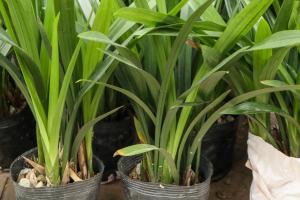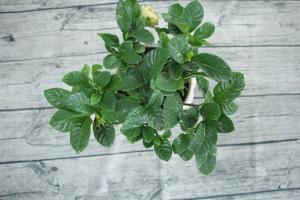How to Prune Beefsteak Tomato Plants
Beefsteak tomatoes are one of the most popular varieties of tomatoes grown in home gardens. They produce large, juicy fruits that are perfect for slicing and using in sandwiches and salads. However, if you want your tomato plants to yield a bountiful harvest, it's essential to prune them regularly. Here's how you can prune your beefsteak tomato plants:
Why prune beefsteak tomato plants?
Pruning your beefsteak tomato plants will help to increase their productivity and improve the quality of the fruit they produce. When you prune your plants, you remove unwanted shoots and branches that take away from the plant's energy and nutrient supply. By doing so, you redirect that energy into developing healthy stems, leaves, and fruits. Pruning also helps to improve air circulation and reduce the risk of diseases and pests.
When to prune beefsteak tomato plants?
The best time to prune your beefsteak tomato plants is when they're young, and you notice the first flowering branch. Typically, this is around four to six weeks after planting. You should also prune your plants regularly throughout the growing season. Once your plants have started producing fruits, you can remove any unwanted shoots or leaves to direct more energy into the developing fruits.
How to prune beefsteak tomato plants?
When pruning your beefsteak tomato plants, you'll need a pair of sharp, clean pruning shears. Start by removing any shoots or branches that grow below the first flowering branch or the first cluster of fruits. These shoots are called suckers and tend to grow at the base of the plant. Removing them will allow the plant to focus on growing the main stem and developing the fruits.
You should also remove any leaves that are growing lower down on the stem and any yellow, diseased, or damaged leaves. Removing these leaves will improve air circulation and reduce the risk of diseases spreading throughout the plant.
When you're pruning your beefsteak tomato plants, be careful not to cut off any stems or branches that are developing flowers or fruits. These are essential for the plant's growth and development. Also, avoid removing too many leaves or shoots at once, as this can shock the plant and affect its growth.
Maintenance pruning
Once your beefsteak tomato plants have started producing fruits, you should do some maintenance pruning regularly. This includes removing any leaves or shoots that are shading the developing fruits or growing too close to other leaves or fruits. You should also remove any branches that are rubbing against each other, as this can damage the bark and provide a gateway for insects and diseases.
Finally, it's essential to keep an eye out for any signs of diseases or pest infestations. Early detection and treatment can prevent the problem from spreading and save your plants. Always use clean pruning shears and sanitize them between plants to prevent the transmission of diseases.
Conclusion
Pruning your beefsteak tomato plants is crucial if you want to enjoy a healthy and bountiful harvest. By removing unwanted shoots and branches, redirecting energy, improving air circulation, and reducing the risk of diseases and pests, you can help your plants thrive. Remember to prune your plants regularly and be gentle when removing leaves or shoots to avoid damaging the plant. With proper pruning and care, you'll be rewarded with juicy and delicious beefsteak tomatoes!

 how many times do yo...
how many times do yo... how many planted tre...
how many planted tre... how many pine trees ...
how many pine trees ... how many pecan trees...
how many pecan trees... how many plants comp...
how many plants comp... how many plants can ...
how many plants can ... how many plants and ...
how many plants and ... how many pepper plan...
how many pepper plan...































